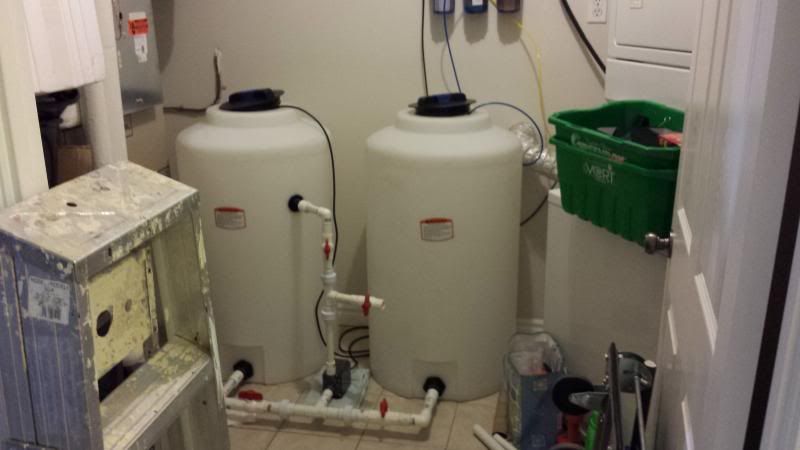curiousphil
Super Active Member
- Joined
- Apr 15, 2013
- Location
- London, Ontario
I'm doing some controller planning and a bit of programming today, and I had a neat idea for controlling the ATO pump.
I figure one of the main benefits of an ATO, aside from saving some manual labour, is to keep your salinity stable - right?? And I always measure out my new saltwater carefully to ensure that I keep my salinity stable during water changes. But what I don't always get right is the water level in the sump - I use the ol' bucket over the top of the tank method for filling... amd even if I used a pump I would still likely want to use all of my makeup water rather than let it sit in a bucket until the next water change or dumping it.
So - instead of using float switches as the primary ATO driver, why not use the data from my conductivity probe? When salinity reaches 34.95 PPM, turn pump on. When salinity reaches 35.05 PPM, turn pump off. This will keep the water level at whatever level I've filled it to while ensuring stable salinity. I never fill it past the safe level but it is variable enough that if I relied on the float switches to maintain the water level it could cause the salinity to rise or fall from whatever it was right after my water change.
I would still keep the float switches in place as failsafes - if for whatever reason, for example, the conductivity probe reads an OK value but the water level drops past the safe operating level, then the switch would override the probe data. Likewise if the water level gets too high.
What do you guys think? Good idea? Anybody else do something similar to this, or ever heard of it being done? Foresee any pitfalls or risks that I'm not thinking of? It would be very simple to code.
I figure one of the main benefits of an ATO, aside from saving some manual labour, is to keep your salinity stable - right?? And I always measure out my new saltwater carefully to ensure that I keep my salinity stable during water changes. But what I don't always get right is the water level in the sump - I use the ol' bucket over the top of the tank method for filling... amd even if I used a pump I would still likely want to use all of my makeup water rather than let it sit in a bucket until the next water change or dumping it.
So - instead of using float switches as the primary ATO driver, why not use the data from my conductivity probe? When salinity reaches 34.95 PPM, turn pump on. When salinity reaches 35.05 PPM, turn pump off. This will keep the water level at whatever level I've filled it to while ensuring stable salinity. I never fill it past the safe level but it is variable enough that if I relied on the float switches to maintain the water level it could cause the salinity to rise or fall from whatever it was right after my water change.
I would still keep the float switches in place as failsafes - if for whatever reason, for example, the conductivity probe reads an OK value but the water level drops past the safe operating level, then the switch would override the probe data. Likewise if the water level gets too high.
What do you guys think? Good idea? Anybody else do something similar to this, or ever heard of it being done? Foresee any pitfalls or risks that I'm not thinking of? It would be very simple to code.
